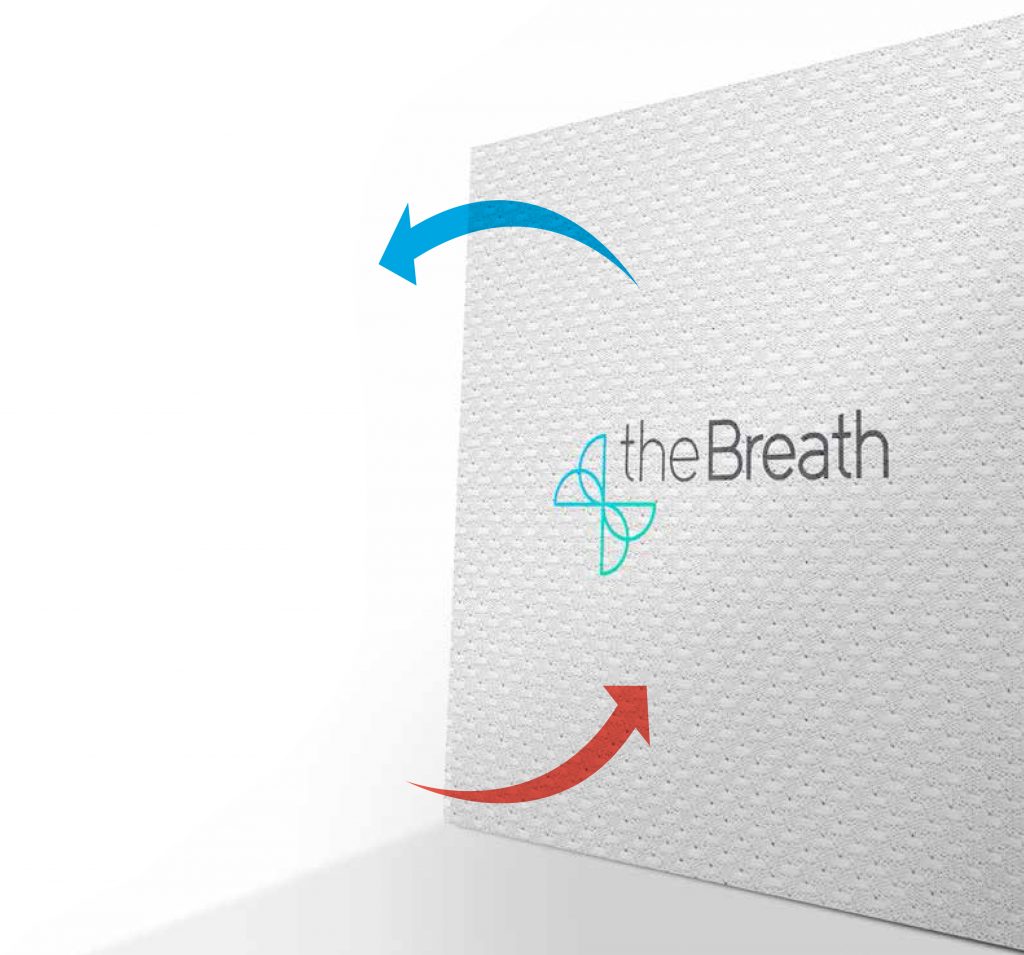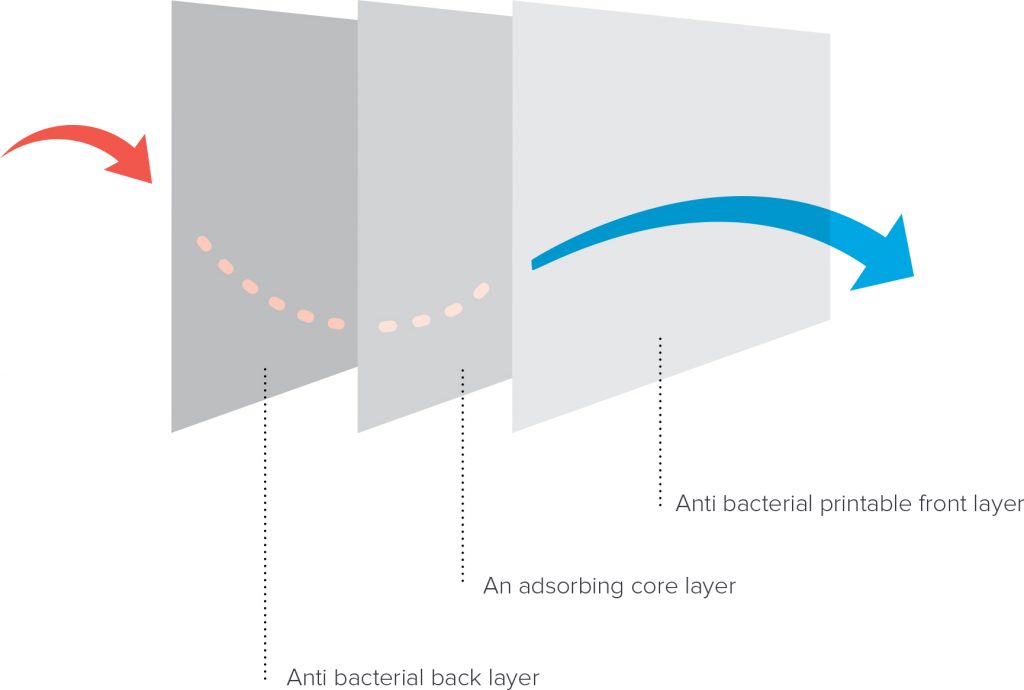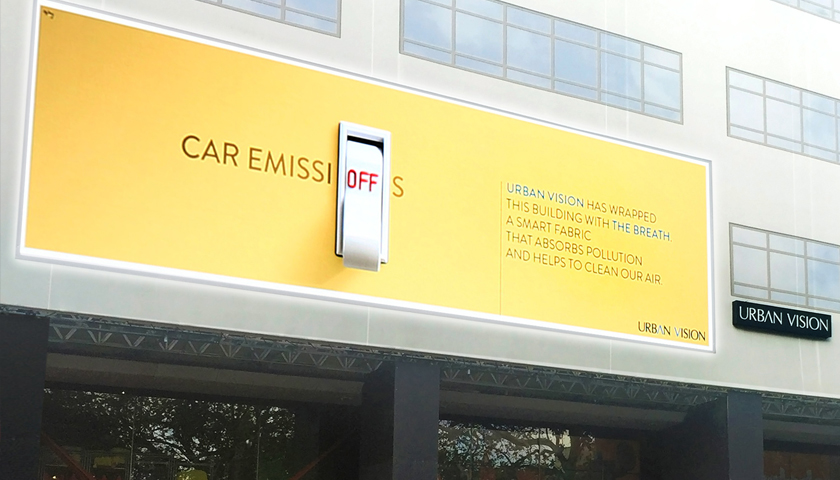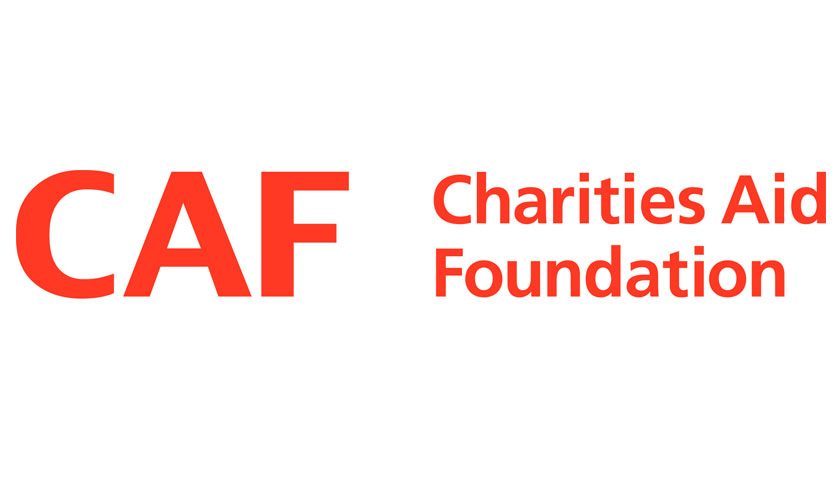“The Breath” was created by a team of leading Italian researchers and has been rolled out across several European cities, including Rome and Milan, over the last three years. It is a ground-breaking material hailed by medical experts for its ability to absorb harmful airborne molecules and disperse cleaner air.
The material can be used for both indoor and outdoor purposes, including for office workstations, classrooms and public advertising spaces.
The Breath’s Italian inventors claim that once the material is installed it can absorb high concentrations of air pollution within a 25-metre area.
By installing 250 sq/m of the material over a one-year period, The Breath’s inventors say its impact on the environment is the equivalent of removing pollution from over 750,000 unleaded vehicles and 300,000 diesel cars.
What is it?

The Breath is an innovative environmental technology that can be used to treat and purify polluted air in cities. The cutting-edge technology is comprised of a multi-layered fabric, which includes a nano–molecular activated core that separates and absorbs harmful airborne pollutants. The high-tech fabric is designed to improve local air quality by reducing toxic pollutants emitted from buildings and vehicles in urban environments.
The Breath’s technology absorbs key polluting gases from the atmosphere such as nitrogen oxides (NOx) and Sulphur dioxide (SO₂) and Benzene (C6H6), a highly toxic carcinogen. By removing these gases from the atmosphere, The Breath’s technology can prevent certain chemical reactions from taking place that create secondary particulates such as PM10, PM1.0 and PM2.5 – which are known to have direct harmful impacts on health.
How it works

The Breath is comprised of three different layers working in synergy. These include:
- A printable and water-resistant front layer mesh which facilitates perspiration;
- An absorbing core layer which captures and transforms the polluting molecules;
- A printable, water-resistant and anti-bacterial back layer.
Taken together, The Breath’s high-tech fabric uses natural air circulation to reduce pollution. The Breath’s inventors describe it as “a passive sustainable design solution” – meaning it requires no external power source to operate and can be placed virtually anywhere (both indoors and outdoors).
The makers of The Breathe claim the fabric has the following properties:
- Anti-pollution: The fabric reduces harmful airborne pollution.
- Self-cleaning: The fabric is designed to dissolve airborne dirt
- Anti-bacterial: The fabric’s fibres prevent moulds or fungi from growing (even in north facing locations)
- Water resistant: Protects buildings from rainfall whilst works are undertaken
- Anti-odorous: Absorbs localised unpleasant smells
Urban Canyon Effect
An “urban canyon” is defined as the space above the street and between the buildings – thus creating a canyon-like environment. Within this microclimate, pollution from vehicles and buildings is concentrated, leading to the build-up of a pollutants like:
- Carbon monoxide (CO)
- Nitrogen oxides (NOx)
- Ground level ozone
- Secondary particulates (PM10, PM0.1 and PM 2.5)
- Sulphur dioxide (SO₂)
- Hydrocarbons
- Lead (Pb)
- Benzene (C6H6)
The density of buildings, roads and public transport infrastructure prevents the dispersal of the above pollutants. The Breath has an optimum impact on air quality within
an urban canyon – effectively removing pollution from the local atmosphere.
- Within an urban canyon, air is circulated up into The Breath’s fabric mesh.
- As air passes through the fabric mesh, pollution is trapped in The Breath’s nano-molecular activated core.
The core transforms the polluting molecules, this cleans the air.
The Breath in numbers:
The installation of The Breath in a city environment would directly tackle air pollution occurring from energy use in and around buildings – as well as absorbing vehicle
pollution from the street and nearby transport infrastructure.
10 sq/m of The Breath could absorb in a year the pollution from:
- 13,650 Petrol Cars
- 5,475 Diesel Cars
- 5 boilers
Where can it be used?

Outdoor usages include:
- Street advertising and billboards
- Roofs (around air conditioning units and boiler flues)
- Street signs
- Street furniture
- Bus shelters
- Kiosks
- Integrated system in ventilated facades
- Playgrounds
- Roadside pollution barrier
The fabric reduces pollutants from heating, chemical products and dust particles. It can be used in both commercial and residential buildings. Indoor usages include:
- Display boards
- Signage
- Paintings
- Furniture and screens
- Offices
- Gyms
- Hotel rooms
- Hospitals
- Care homes
- Tube stations
- Shopping centres
Our Thoughts
A lot of what I have posted has come from their marketing presentation, but on the face of it, it seems impressive. The Breath, has already won a series of technological and innovation awards in Italy, was hailed last year by Professor Umberto Veronesi – the former scientific director at the European Institute for Oncology. In March 2016, he said The Breath was a good example of the benefits from the alliance between technology and science, which he said was important in helping to “win the fight in the treatment and prevention of cancer”.
Will the Breath turn out to be the next big thing in advertising, I don’t know but it certainly seems like a good step in the right direction. The very fact that your advert can be helping the environment certainly seems like a powerful motive to use The Breath. I will be interested to see what happens with this and we will be following this carefully.



[…] Could The Breath be the future in billboard advertising? […]